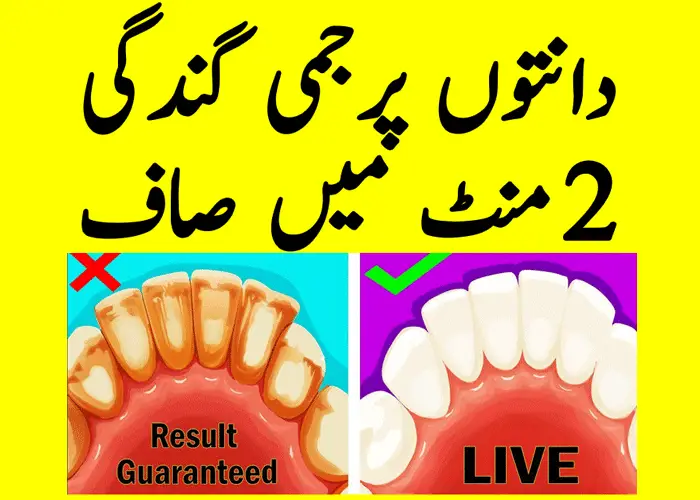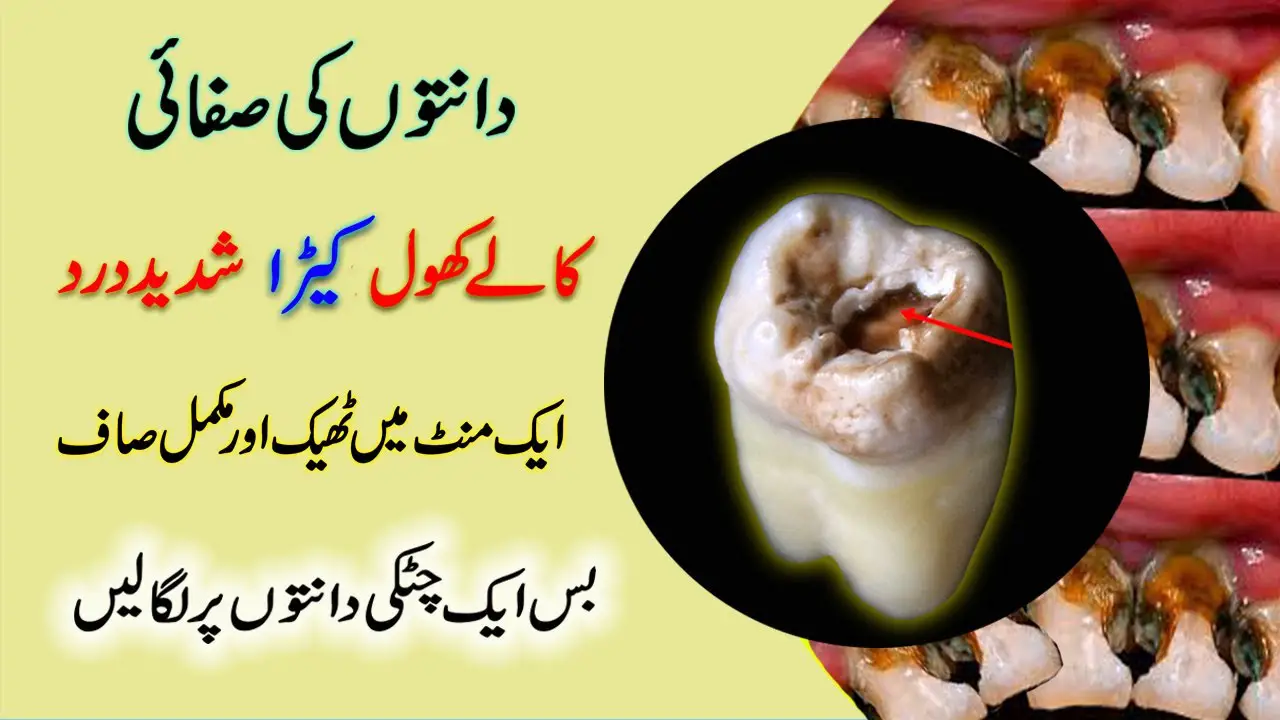
Are you looking for an affordable and easy way to improve your smile? Teeth whitening at home might be the answer! A white, bright smile can make you feel more confident and attractive, but professional whitening can be expensive and time-consuming. Fortunately, there are many safe and effective ways to whiten your teeth at home without damaging your enamel or gums. In this post we’ll explore some natural teeth whitening methods that you can try from the comfort of your own home.
Dant Safed Karne Ka Tarika in Urdu
In the Following Video Hakeem Tariq Mehmood from Ubqari Tells How to Clean Dirty Teeth at Home. Dant Saaf Karne Ka Tarika in Urdu With Simple Home Remedy
Teeth Whitening at Home with Home Remedies
Here are some tips on how to whiten your teeth naturally at home without damaging your enamel or gums.
Teeth whitening strips:
Whitening strips are a convenient and popular teeth whitening option that can be easily used in the comfort of your own home. They work by applying a thin layer of peroxide gel to the teeth, which bleaches away stains and discoloration of the teeth.
Here are the main points to consider when using whitening strips for at-home teeth whitening:
- Look for strips that contain hydrogen peroxide, which is the most effective whitening agent.
- Check the concentration of peroxide in the strips and follow the instructions carefully to avoid overuse or misuse.
- Whitening strips are typically used once a day for a specified number of days, usually ranging from 5-14 days, depending on the brand and concentration of peroxide.
- With proper use, whitening strips can whiten teeth by several shades, leaving you with a brighter, more confident smile.
- Whitening strips may not be suitable for everyone, and it’s always best to consult with a dentist before trying any at-home teeth whitening product.
Tea tree oil for teeth bleeding:
Dilute a drop of tea tree oil with a teaspoon of coconut oil and rub the mixture on your gums. Tea tree oil has antibacterial properties that can help reduce gum inflammation and teeth bleeding gums.
Oil pulling:
This is an ancient technique that involves swishing oil, such as coconut, sesame, or sunflower oil, in your mouth for 15 to 20 minutes. The oil is supposed to pull out bacteria and plaque that cause yellowing.
Baking soda:
Baking soda is a mild abrasive that can help remove surface stains from your teeth. You can mix it with water or hydrogen peroxide and brush your teeth with it once or twice a week.
Hydrogen peroxide:
Hydrogen peroxide is a bleaching agent that can whiten your teeth by breaking down stains. You can use it as a mouthwash or mix it with baking soda to make a paste. You should only use a low concentration (3% or less) and limit your use to once or twice a week, as it can cause sensitivity and irritation.
Fruits:
Some fruits, such as strawberries, pineapples, and papayas, contain enzymes that may help whiten your teeth. You can mash them and apply them to your teeth for a few minutes, then rinse your mouth with water.
Brush and floss regularly:
Before you start any teeth whitening treatment, it’s important to ensure your teeth are clean and healthy. Brush and floss regularly to remove any plaque or tartar buildup that can cause discoloration. This step alone can help brighten your smile significantly.
Use a whitening toothpaste:
Whitening toothpaste is an easy and affordable way to remove surface stains and prevent new ones from forming. Look for a toothpaste that contains baking soda, hydrogen peroxide, or both, as these ingredients are proven to whiten teeth.
Use a whitening gel:
Whitening gels are similar to whitening strips but come in a gel formula that you apply directly to your teeth with a brush or applicator. They can be more effective than strips, but they’re also messier and require a bit more effort.
Make your own whitening paste:
If you’re looking for a natural, DIY teeth whitening solution, you can try making your own whitening paste. Mix baking soda and hydrogen peroxide into a paste, and use it to brush your teeth for a minute or two each day. Just be sure not to overdo it, as baking soda can be abrasive and damage your enamel if used too frequently.
Consider LED teeth whitening:
LED teeth whitening is a relatively new at-home teeth whitening option that uses a special light to activate the whitening gel. This can help speed up the whitening process and make it more effective. But remember, LED teeth whitening kits can be more expensive than other options.
Maintain good oral hygiene habits:
Finally, it’s important to remember that good oral hygiene habits are essential for maintaining a bright, white smile. Brush and floss regularly, avoid foods and drinks that can stain your teeth (like coffee, tea, and red wine), and see your dentist for regular cleanings and checkups.
In conclusion, teeth whitening at home can be a cost-effective and convenient way to brighten your smile. There are plenty of options to choose from, so find the one that works best for you and stick with it. With a little bit of effort, you can have a smile that dazzles!





